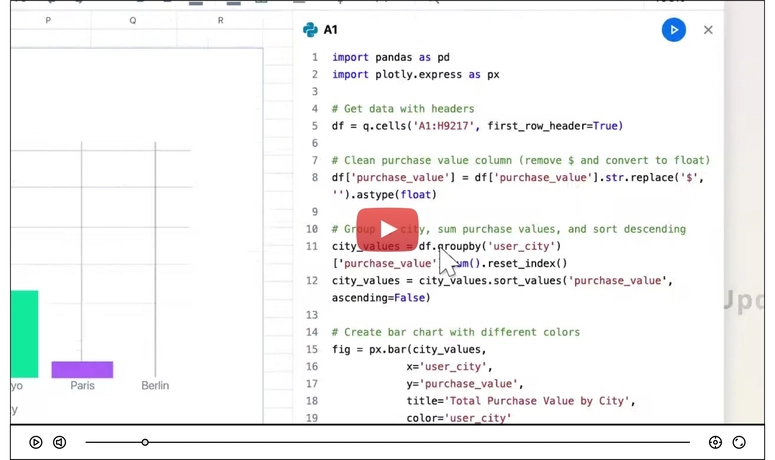Introduction to Microservice Architecture
In modern software development, the shift from monolithic applications to microservices has revolutionized how organizations build and deploy scalable systems. Microservice architecture refers to an architectural style that structures an application as a collection of loosely coupled, independently deployable services, each focused on a specific business function. By adopting this approach, businesses can achieve higher flexibility, scalability, and efficiency, making it particularly suitable for large-scale applications and distributed systems.
This guide explores the key principles of microservice architecture, including the benefits, challenges, and best practices for implementing microservices. Whether you're a software architect, developer, or team lead, understanding these principles will help you leverage the full potential of microservices in your next project.
1. Single Responsibility Principle (SRP)
One of the fundamental principles of microservice architecture is the Single Responsibility Principle (SRP). Each microservice should be designed to perform a specific, well-defined function or business capability. This principle is deeply rooted in the idea of keeping things simple and focused.
For example, in an e-commerce application, you might have separate microservices for user authentication, product management, order processing, and payment services. Each service handles only its designated task, which makes it easier to develop, test, and maintain over time. When a service is solely responsible for one function, it leads to more manageable and modular systems, as developers can quickly identify the purpose of any given service.
2. Independent Deployability
A core benefit of microservice architecture is the ability to deploy services independently. This principle of independent deployability allows teams to release updates or fixes for individual services without affecting the rest of the system.
This autonomy speeds up the development process, as teams can focus on one service at a time. It also minimizes downtime, as only the affected service needs to be redeployed instead of the entire application. Continuous integration and continuous deployment (CI/CD) pipelines are crucial in supporting independent deployability, ensuring that updates are pushed smoothly and with minimal disruption.
3. Decentralized Data Management
Microservices promote a decentralized approach to data management. Instead of having a single, centralized database shared across multiple services, each service manages its own data store. This principle is known as decentralized data management.
By ensuring that each service has its own database, microservices can evolve independently and avoid the bottlenecks associated with a shared database. It also allows teams to choose the most appropriate type of database (e.g., relational, NoSQL) based on the specific needs of each service. However, this approach requires careful consideration of data consistency and transaction management, which can be a challenge in a distributed environment.
4. Loose Coupling
Microservices are designed to be loosely coupled. This means that each service operates independently, with minimal dependency on other services. Communication between services is achieved through well-defined APIs, usually over HTTP or messaging queues, which allows services to interact without being tightly bound to each other.
Loose coupling is essential because it allows each service to evolve at its own pace without introducing disruptions to the system. If one service needs to be updated or replaced, it can be done without causing cascading changes across the entire application. This flexibility is a hallmark of microservice-based systems.
5. Domain-Driven Design (DDD)
Domain-Driven Design (DDD) plays a key role in organizing microservices around business domains. DDD emphasizes understanding the core business logic and defining boundaries around each domain. A bounded context is established for each microservice, which clearly defines its scope and responsibility.
For instance, in an e-commerce platform, the order management service, the payment service, and the product service would each form a bounded context. DDD helps teams align their development efforts with business needs, ensuring that each service addresses specific business problems effectively. By organizing services this way, the architecture becomes more intuitive and easier to manage.
6. Autonomy
One of the most significant advantages of microservice architecture is the level of autonomy it offers. Each microservice is independent, meaning that development, deployment, and scaling can all be done without direct coordination with other services. This autonomy allows teams to work in parallel, speeding up the overall development process.
For example, a team working on the order service can deploy updates without waiting for changes in the payment or user service. This autonomy is especially beneficial in agile development environments, where fast iterations and frequent releases are crucial.
7. Resilience and Fault Isolation
Microservice architectures emphasize building resilient systems. The principle of fault isolation ensures that a failure in one service does not bring down the entire system. If a service fails, it should be isolated from the rest of the system to minimize the impact.
Techniques like circuit breakers, retries, and bulkheads are commonly used to handle failures gracefully. For instance, if a payment service is down, the order service can still function, and a fallback mechanism can be triggered to handle payment retries or notify users about the issue.
8. Technology Diversity
One of the appealing aspects of microservices is the flexibility to use a variety of technologies. Since each service is independent, developers are free to choose the best technology stack for the job. This could mean using different programming languages, databases, or frameworks depending on the service’s specific needs.
For example, a high-performance service might be written in Go or Java, while a service requiring rapid prototyping could use Node.js. This technology diversity enables teams to leverage the strengths of different tools and languages, providing them with a competitive advantage.
9. API-First Design
Microservices interact primarily through APIs, and the design of these APIs is crucial for the success of the system. The principle of API-first design ensures that each service exposes a well-defined, consistent interface for communication.
Whether the APIs are RESTful, use gRPC, or rely on messaging queues, having a strong API contract helps ensure that services can interact with each other seamlessly. API-first design is critical for maintaining loose coupling between services and allowing teams to work independently on different services.
10. Scalability and Flexibility
Scalability is one of the primary motivations for adopting microservices. Since each service is independent, it can be scaled individually to meet demand. For instance, if a particular service experiences high traffic, it can be scaled up without having to scale the entire application.
This scalability is often combined with flexibility. Different services can be scaled in different ways depending on their needs. For example, the user service may require horizontal scaling, while the data analytics service might be better suited for vertical scaling. This flexibility in scaling leads to efficient resource utilization and cost savings.
11. Continuous Delivery and Automation
Continuous delivery (CD) is a key practice in microservice architectures. Given that microservices are deployed independently, it's essential to have automated processes for building, testing, and deploying services. This enables teams to push updates quickly and reliably, reducing the time it takes to introduce new features or fix bugs.
By automating as much as possible, teams can focus more on delivering value rather than worrying about deployment issues. Tools like Jenkins, Docker, and Kubernetes play a crucial role in automating the CI/CD pipeline for microservices.
12. Monitoring and Observability
With microservices, monitoring and observability become even more critical. A distributed system requires a holistic view of all services to ensure that everything is functioning properly. Tools like Prometheus, Grafana, and Jaeger are commonly used to collect metrics, logs, and traces to monitor microservice health and performance.
Having proper monitoring in place allows teams to quickly detect and address issues before they impact users. It also provides valuable insights into system performance, helping to identify bottlenecks and optimize resource usage.
Conclusion
Microservice architecture offers numerous advantages, including flexibility, scalability, and fault isolation. However, it also introduces challenges such as increased complexity, the need for robust monitoring, and potential data consistency issues. By adhering to the principles outlined in this guide, organizations can build and maintain efficient, resilient microservice-based systems that are capable of adapting to changing business needs.





Top comments (0)